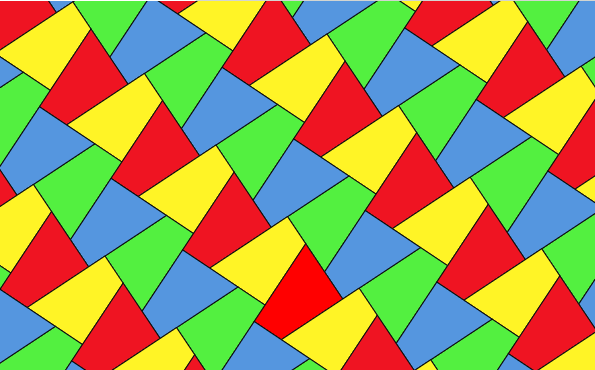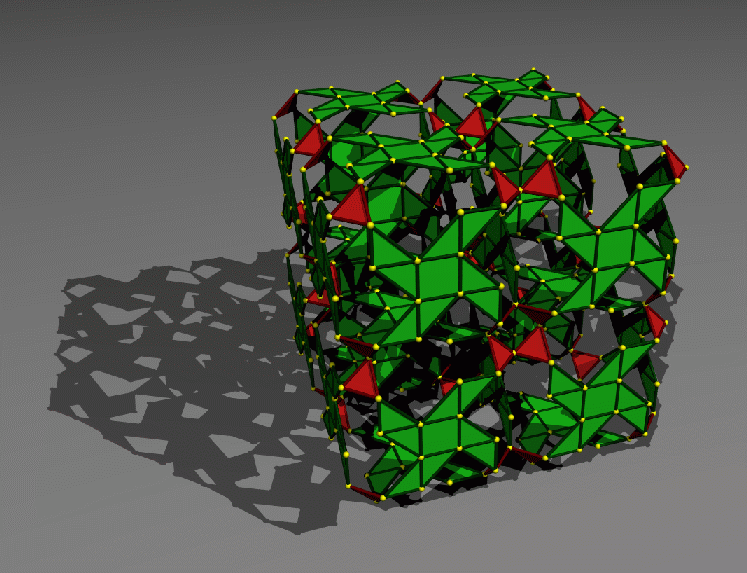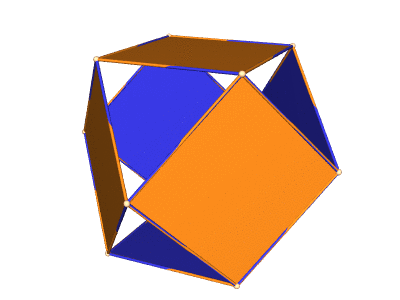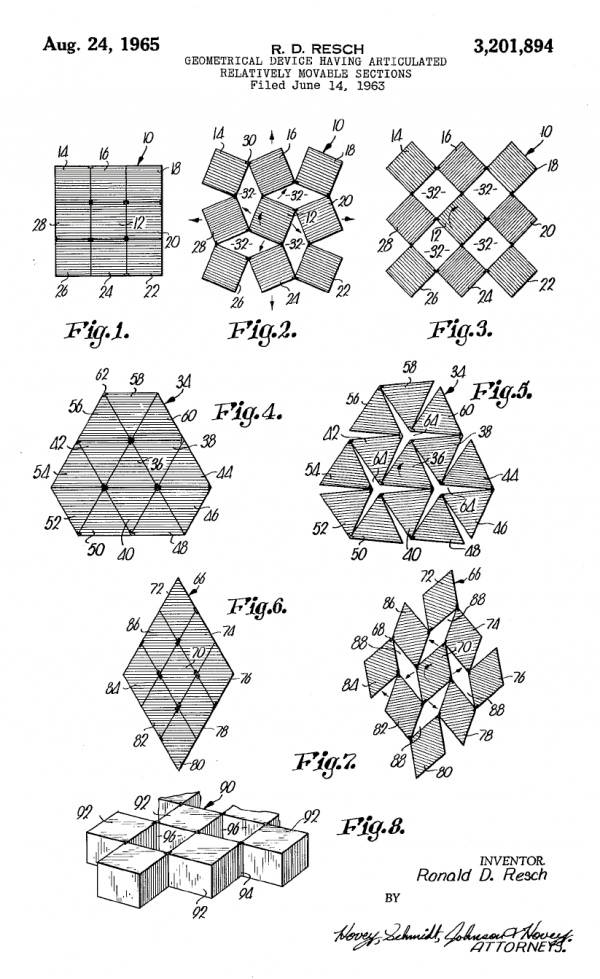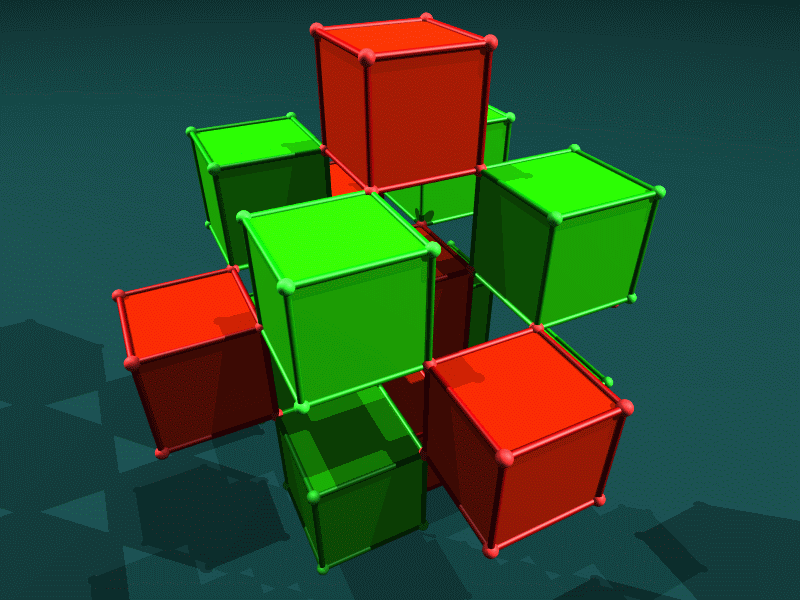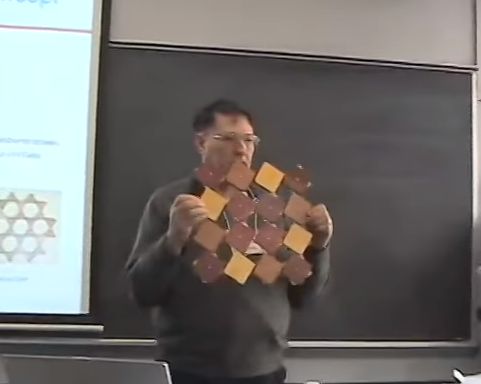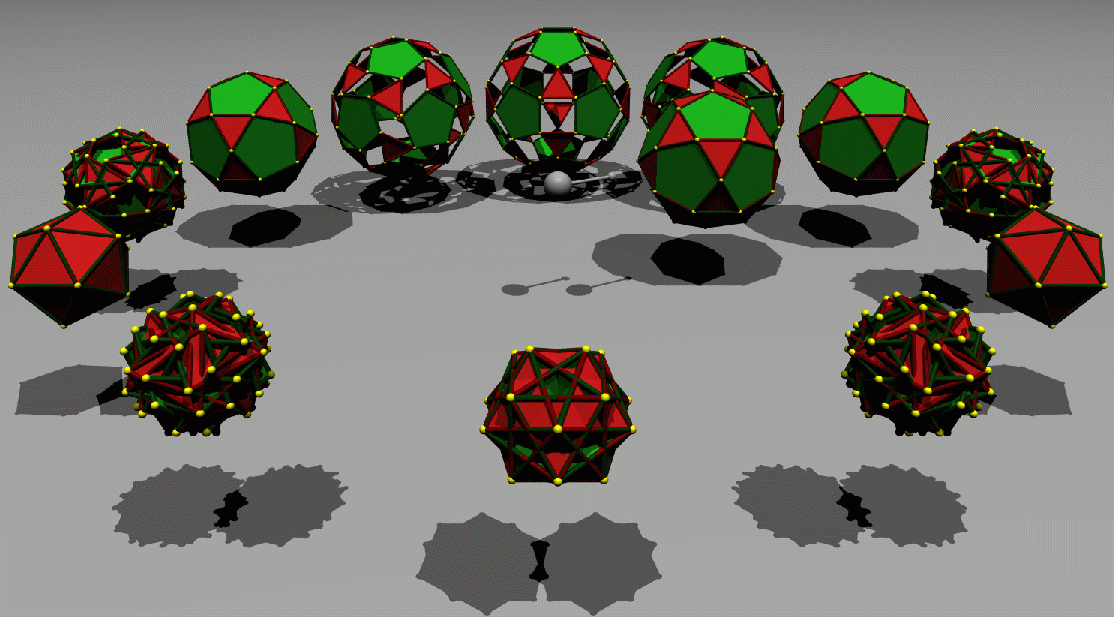
I constructed several working models of these hinged polyhedra. Below
are the most recent ones, made from laser cut pieces. The hinges can be
"snapped" on the polyhedron faces, so the assembly is quick.
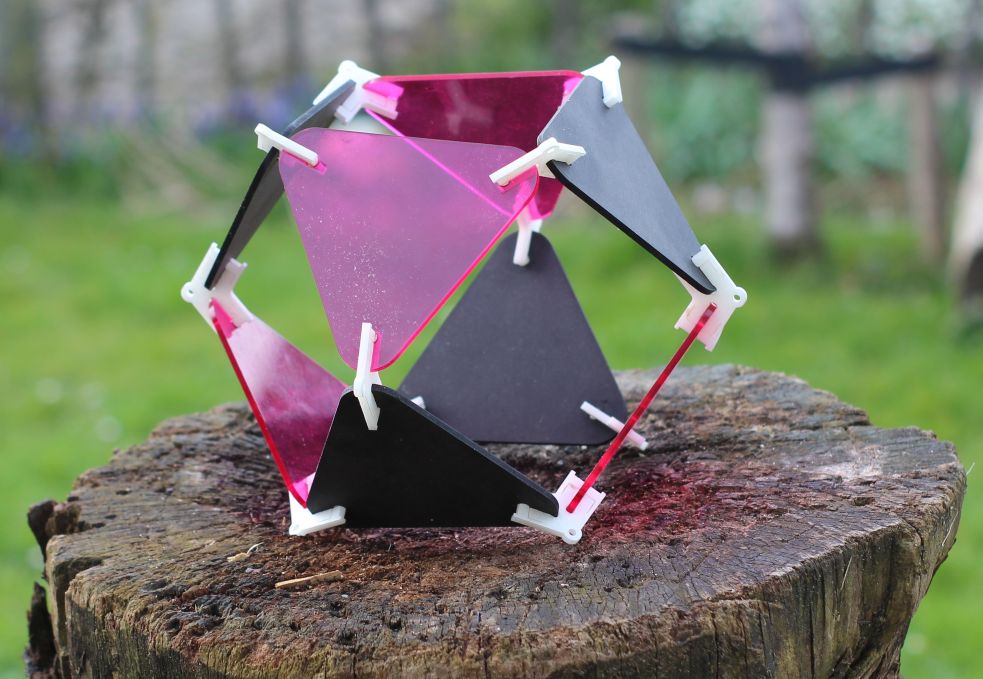
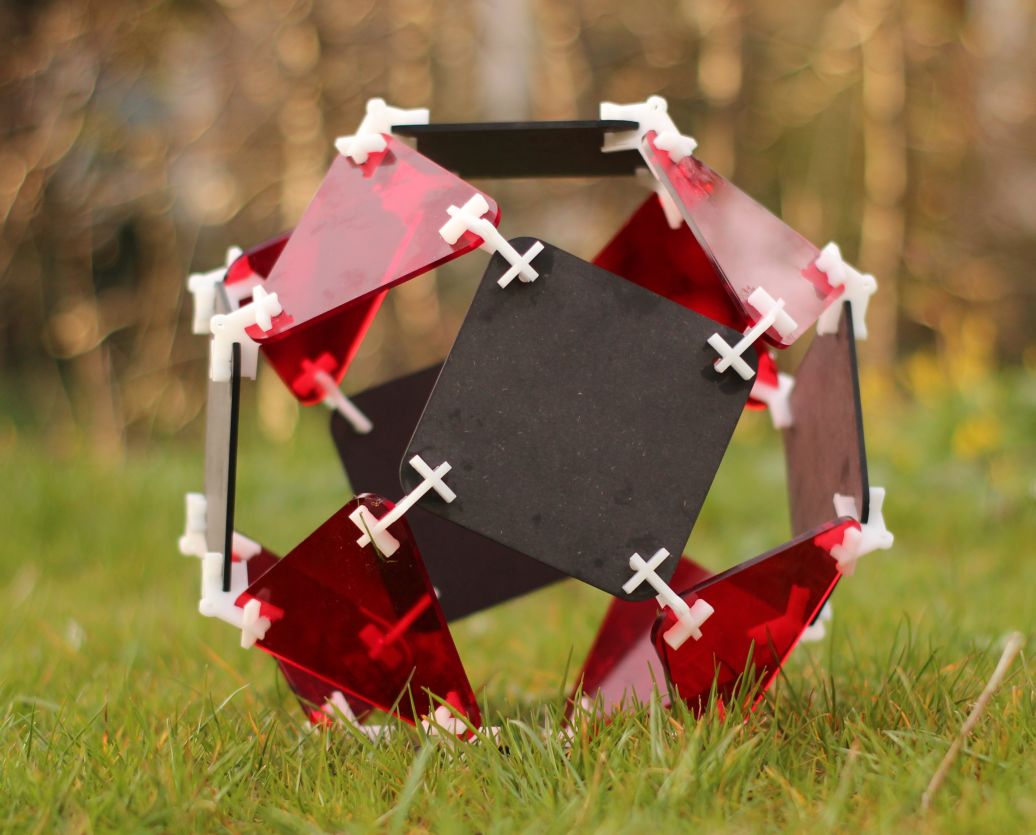
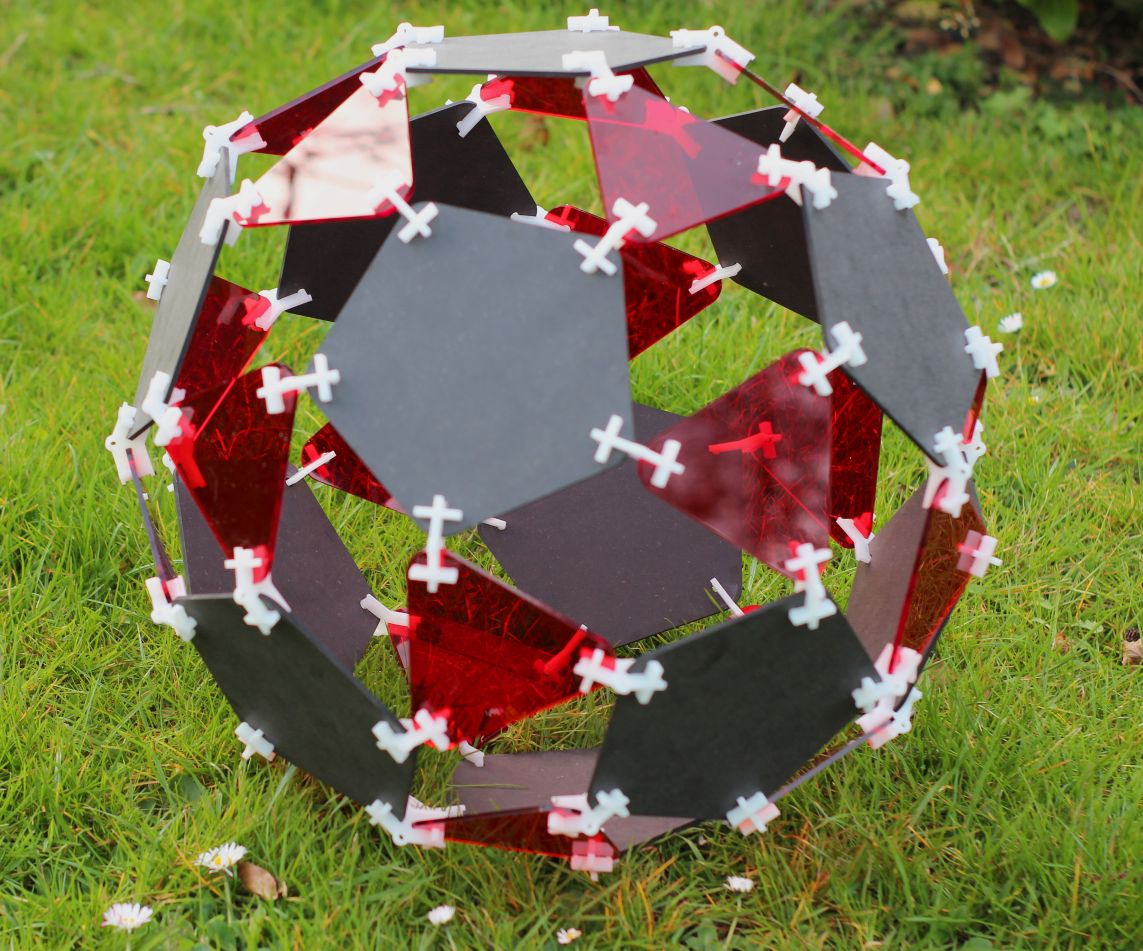
An animation of a 3D printed version:
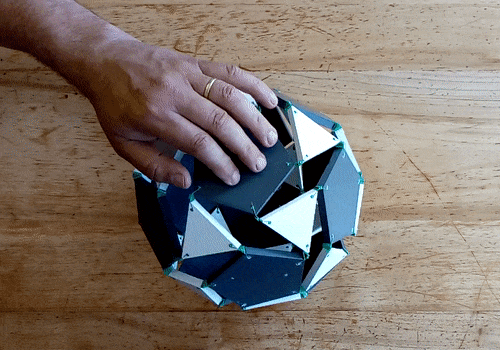
The
hinges are printed using a thin
layer of PETG.
On Twitter,
@HCO28970306
shows all kinds of hinge constructions, using skillful 3D printing
technique:
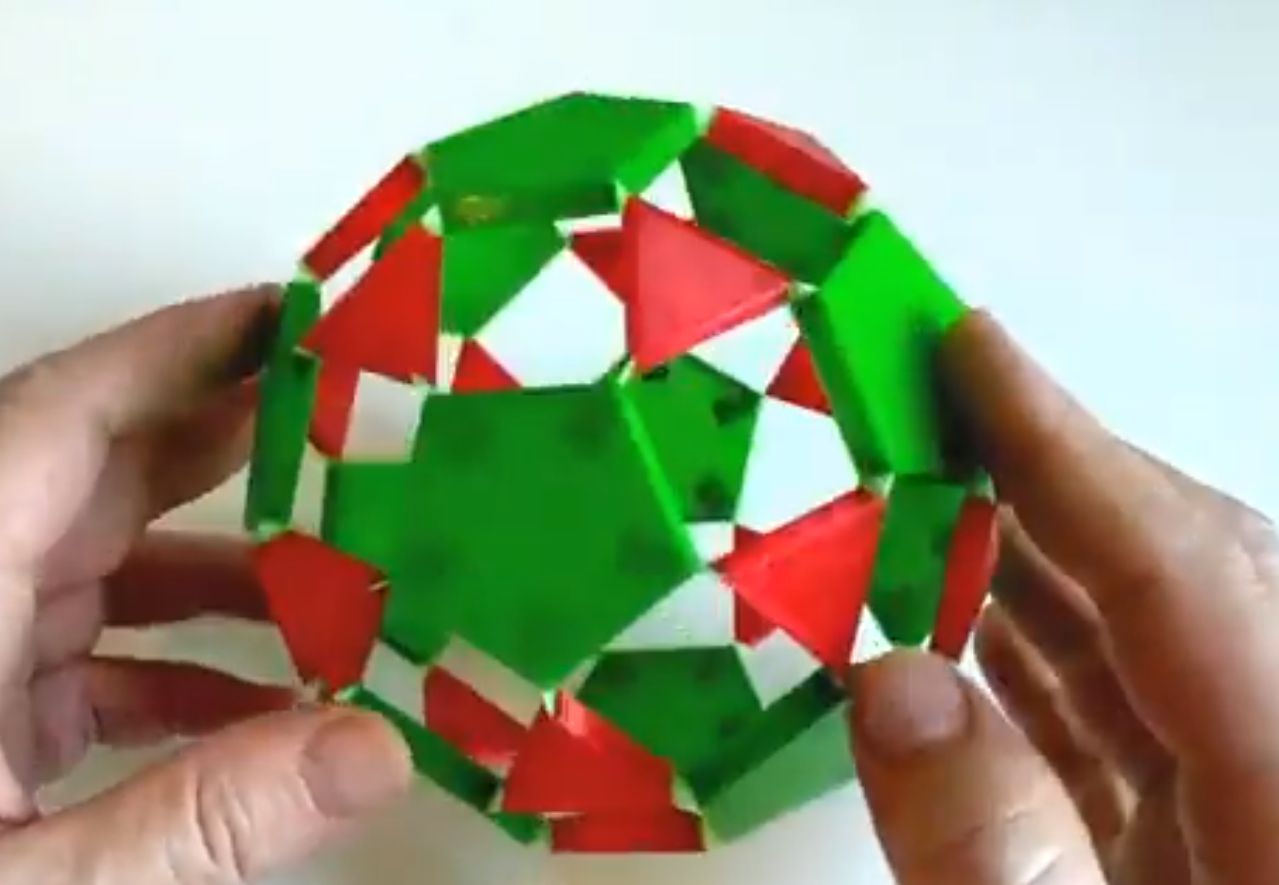
Here is a
Youtube video
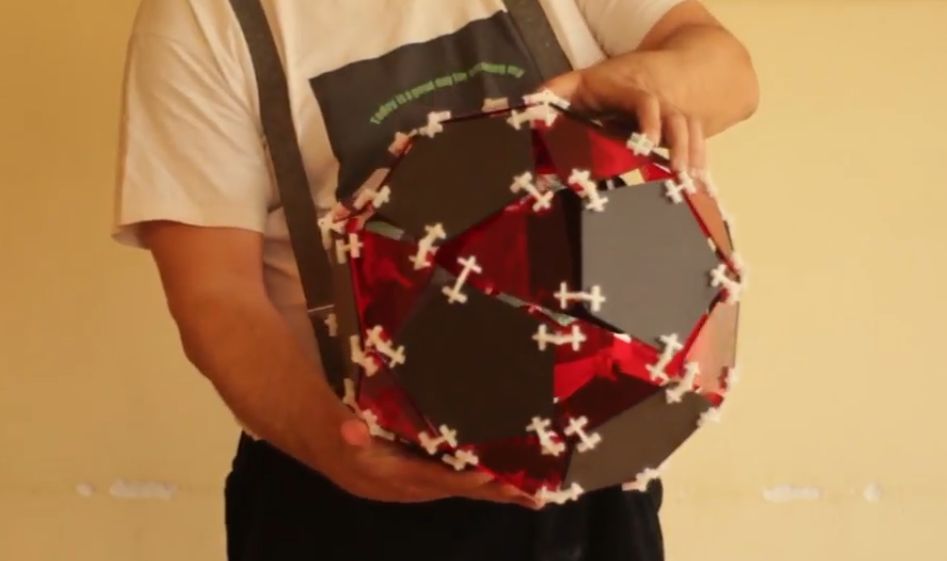

in
which you can see them in action.
Variations
A
"meta hinged octahedron
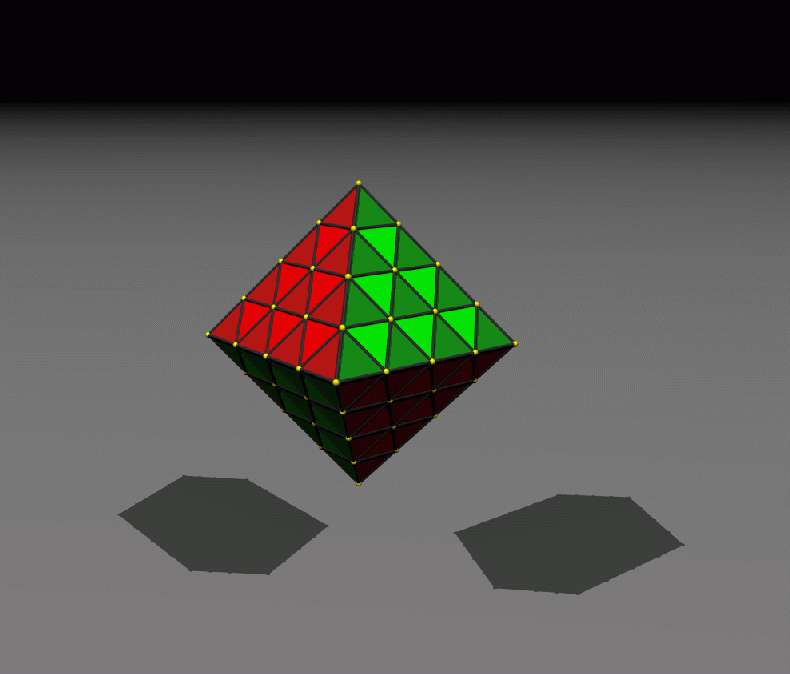
Another planar
tessellations.
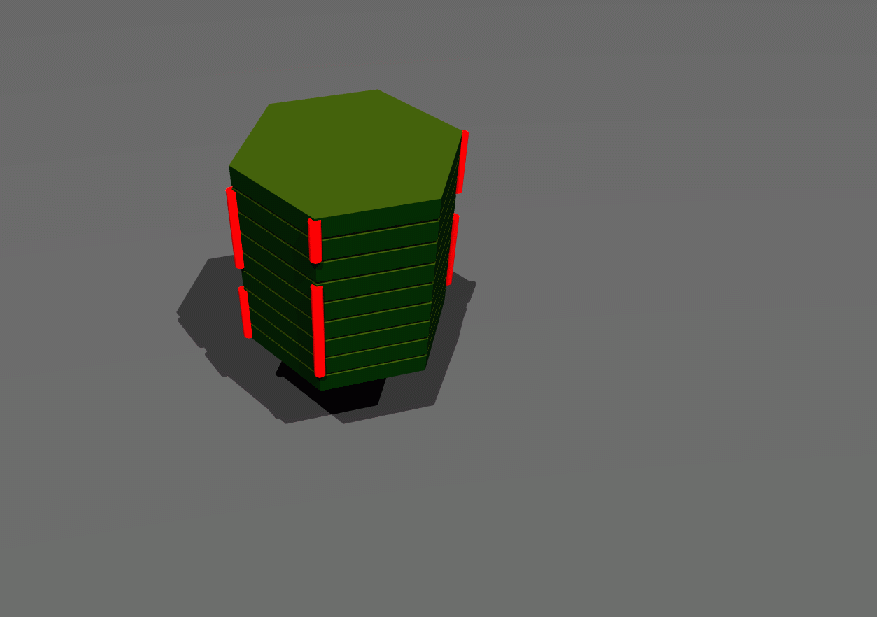
Al
Grant
has a nice page on hinged tessellations, with surprising
generalisations
to irregular ones.
Here is an example:
Inspired
by this, I of course had to
make something myself:
">
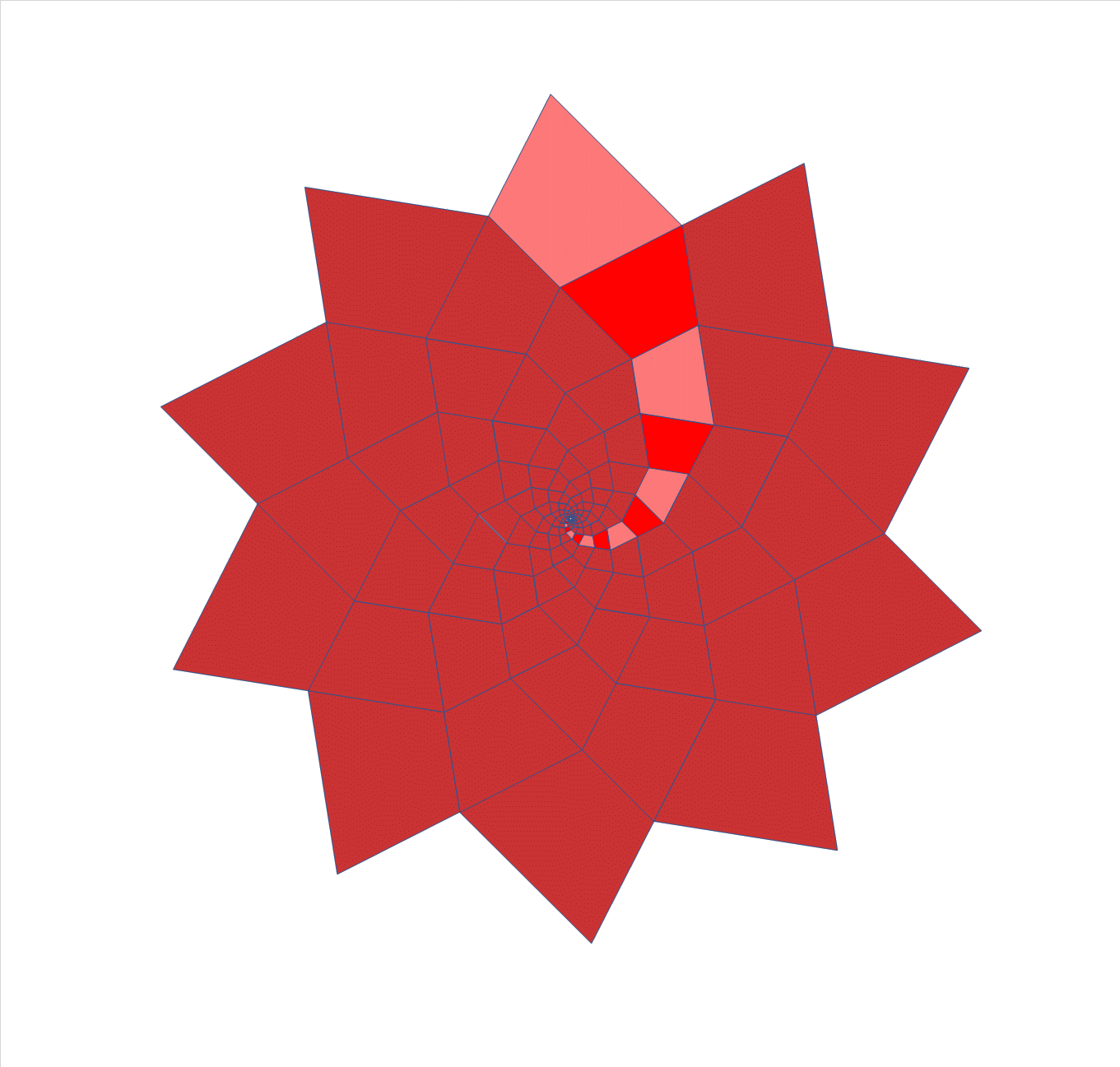
A
hinged Pythagoras tree
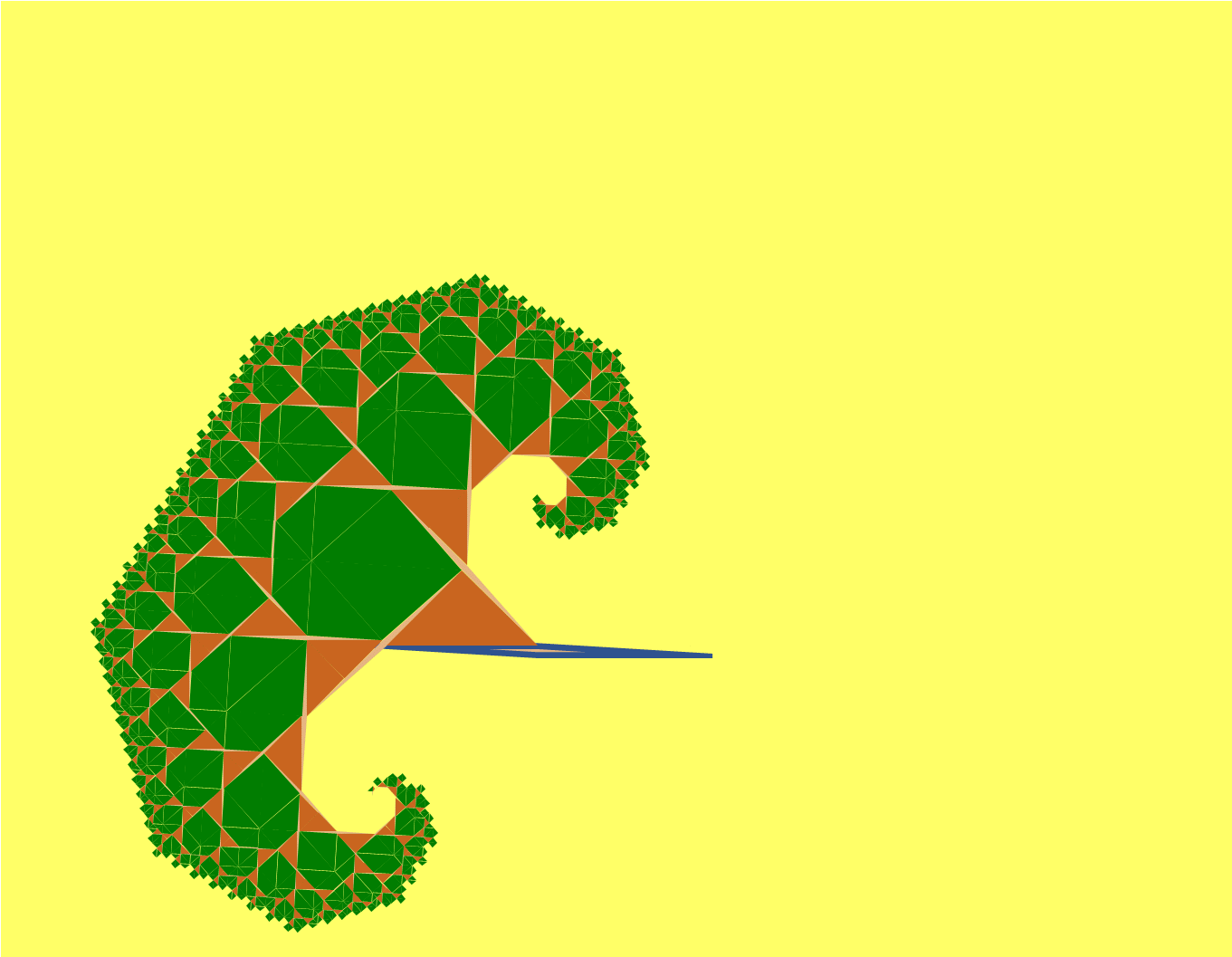
After
people remarked on Twitter that any tiling
composed of rhombi, can
be converted to a
hinged
tiling (connect the midpoints
of each rhombus, they form
rectangels that can be hinged) ,@akivaw tweeted that perhaps Penrose
tiles can be made hinged. Yes! So I made this example:
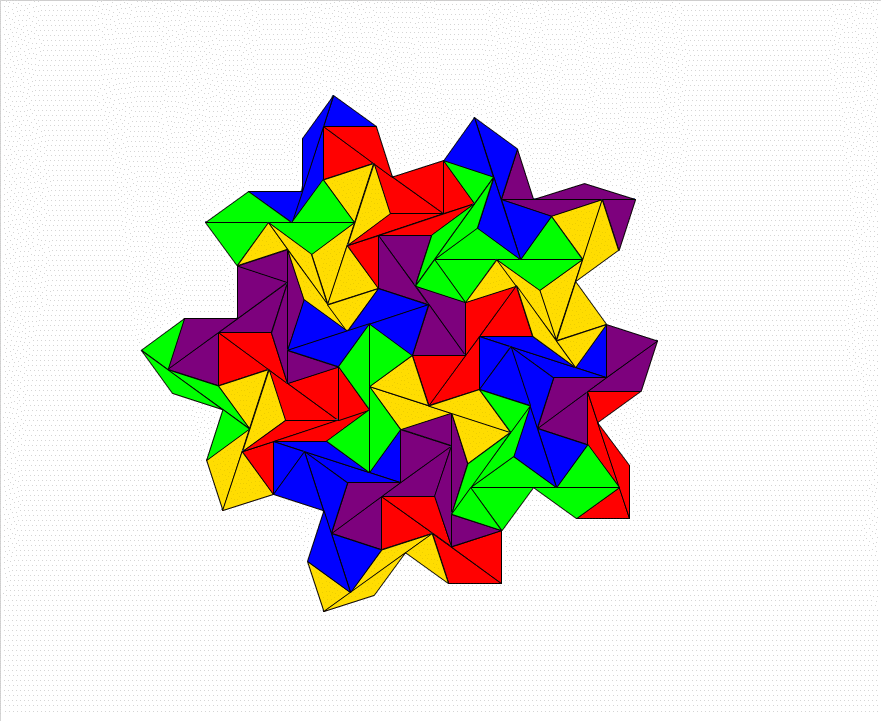
This one feutures Dudeney's
dissection from a triangle to a square:
Augmented
Jitterbugs
If you take a jitterbug, you can put a structure on top of some of its
faces, so that you can make a hinged tetrahedron, or a hinged cube:
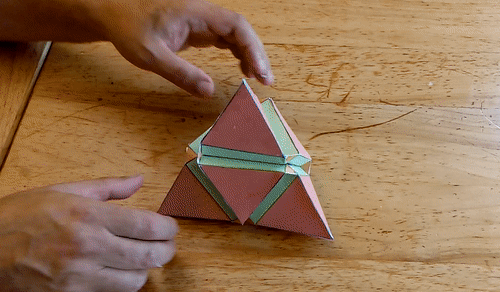
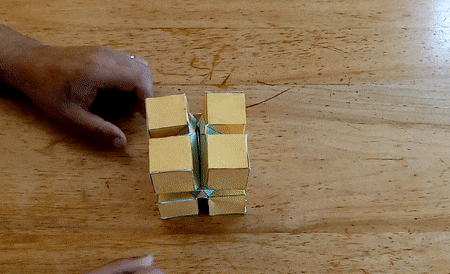
Or
you can extend the hinges
and get this tructaded cube:
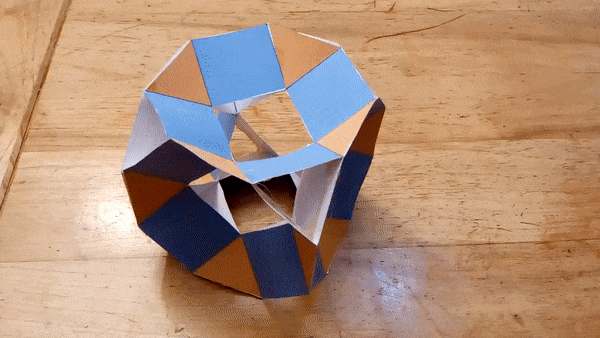
On
twitter,
@KangarooPhysics
stretched
the 12 hinges and attached attached triangles to them, so that you get
a hinged icosahedron!:
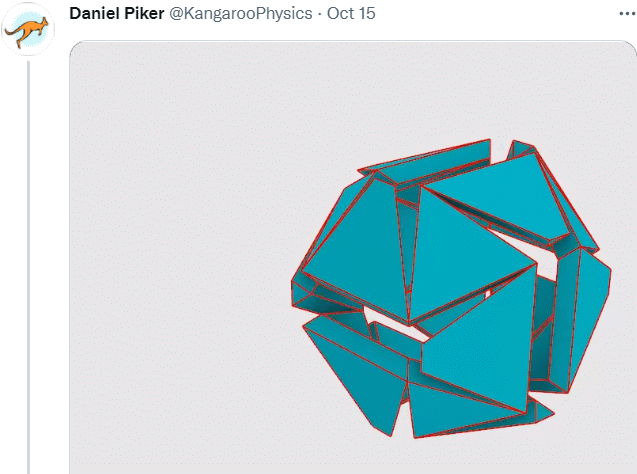
Finally,
a tetrahedron that hinges into a gyrobifastigium, one of the 92 Johnson
solids.
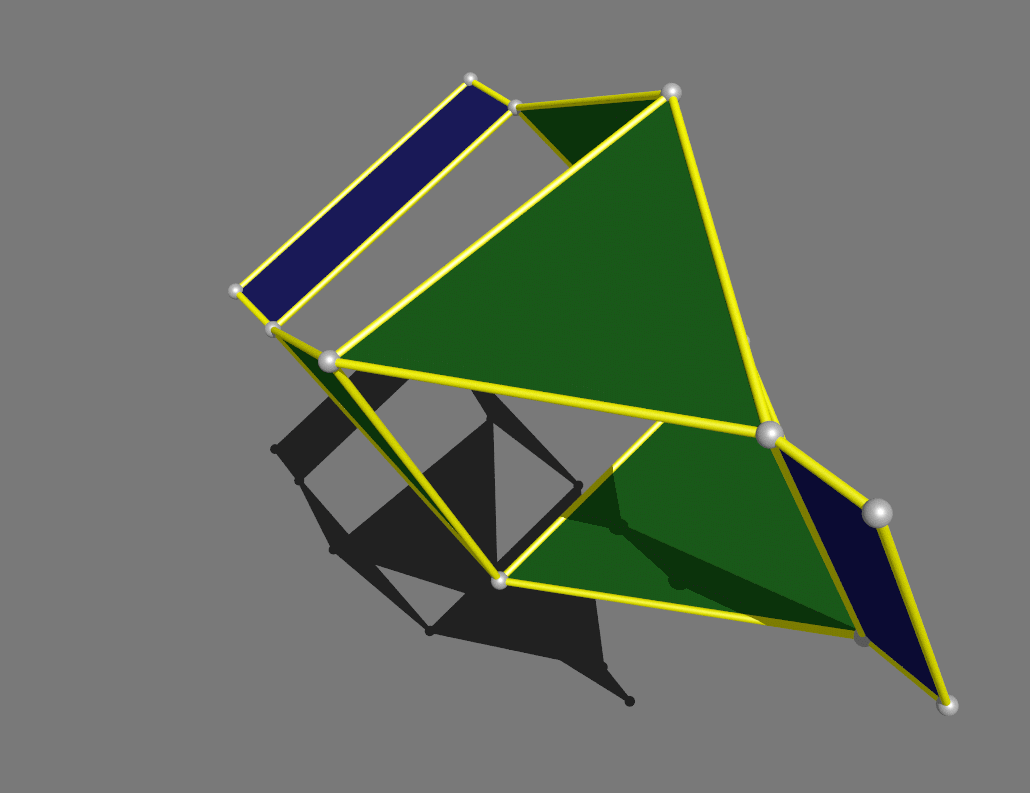
Recently
people are studying
hinged
metamaterials, using structures
with several internal degrees of
freedom, so that
Chuck
Hoberman, has created many cool
hinged structures.
Here is a Youtube
video of a talk I did on hinged
polyhedra.
Recently, I learned that a lot of stuff had been going on in the past
that I didn't know about.
Here is a video about Ron
Resch,
who was doing hinged polyhedra in the sixties!
Many of the things I discovered were in fact rediscoveries. The video
also shows things completely new to me.
He patented hinged tesselations already in 1964.
Here is an animation of a 3D hinged cube array, that generalises the 2D
hinged tesselations in a cool way. Ron Resch built large models of this.
Another person I learned about who was doing things already in the
1960s is Joseph Clinton.
Here
is a
video by Joseph
Clinton. He beat me by several
decades in building some of his
models!
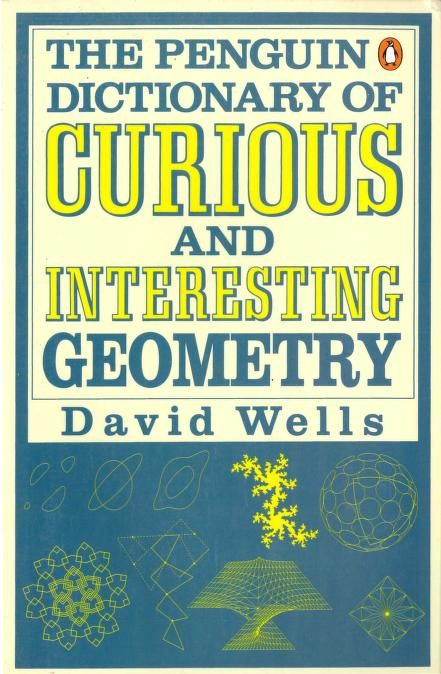
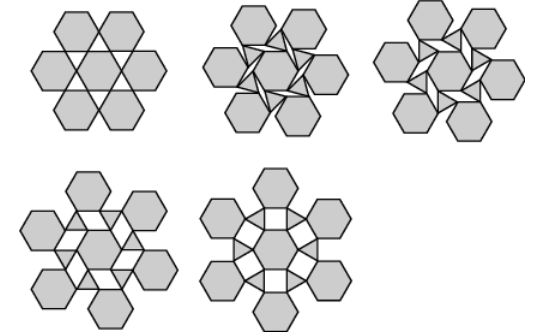
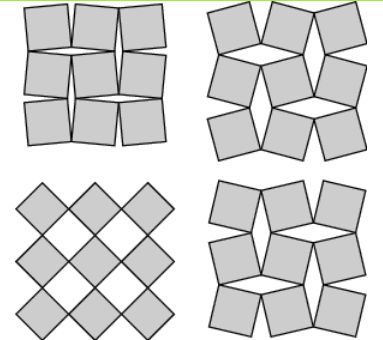




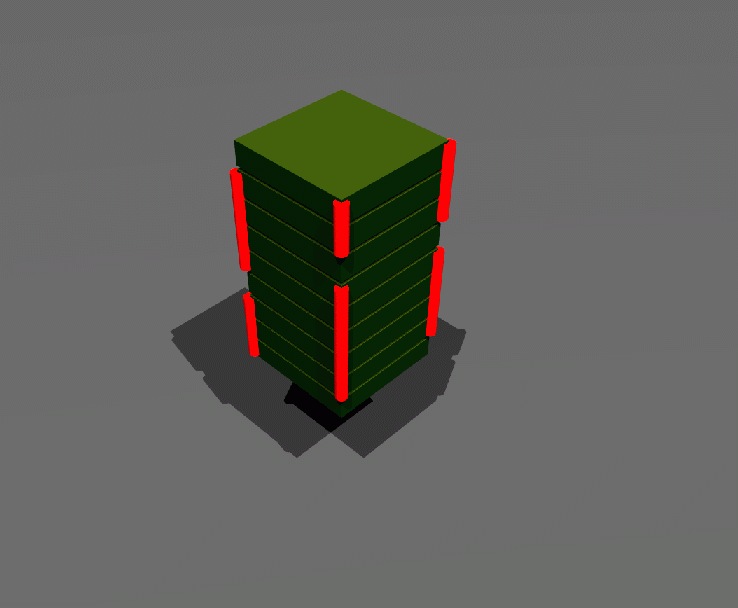
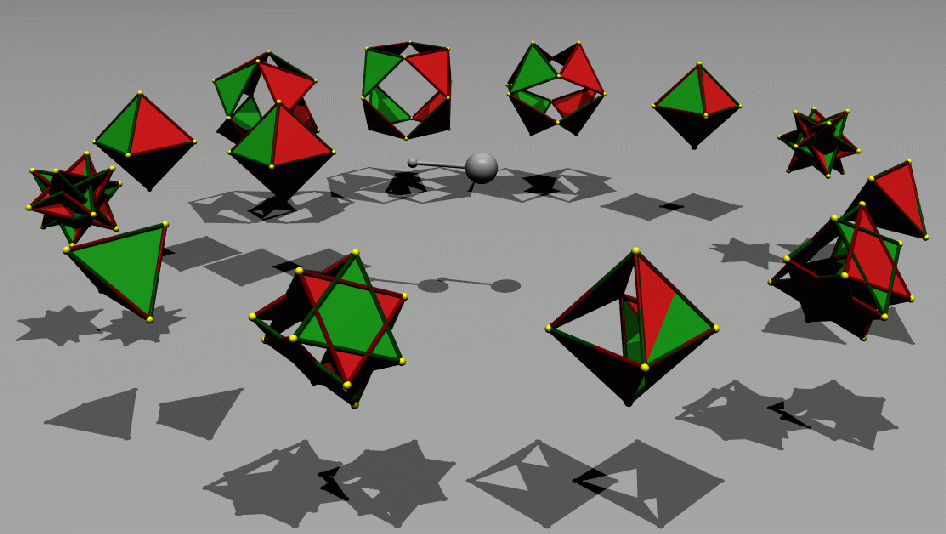







 in
which you can see them in action.
in
which you can see them in action.

